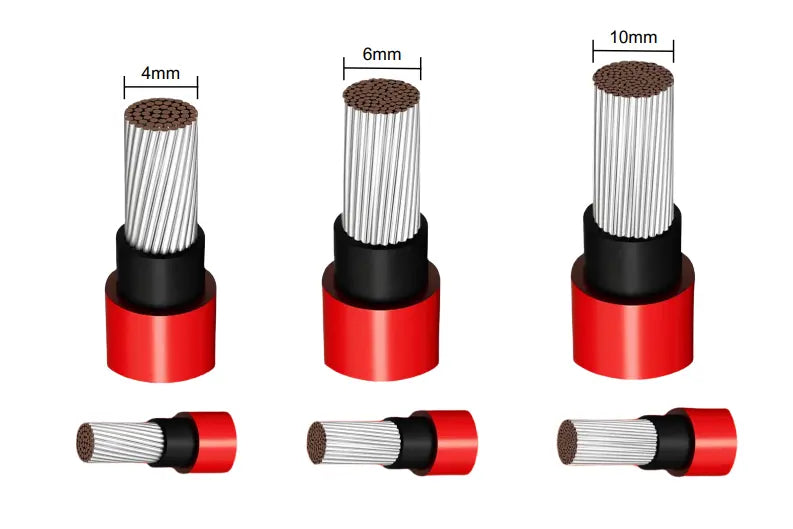With the rising popularity of solar energy systems in both residential and commercial settings, understanding the intricacies of voltage calculation is essential for a successful installation. High and low voltage considerations play a crucial role in determining the efficiency, safety, and performance of solar power systems. In this article, we'll delve into the fundamentals of voltage calculation, explore the significance of wire gauge, discuss the importance of inverter selection, and highlight the advantages of professional-standard PV wires for high voltage installations.
Voltage Calculation Basics
Voltage calculation involves determining the optimal voltage levels to ensure efficient power generation and distribution within a solar energy system. In both residential and commercial installations, two key voltage parameters are considered: high voltage (HV) and low voltage (LV).
-
High Voltage (HV): High voltage refers to the elevated voltage levels generated by solar panels before being converted by the inverter for use in the electrical system. In residential installations, HV typically ranges from 300 to 600 volts DC (direct current), while in commercial installations, it can reach up to 1500 volts DC or higher.
-
Low Voltage (LV): Low voltage refers to the voltage levels used for electrical distribution within the building or facility. In residential settings, LV typically ranges from 120 to 240 volts AC (alternating current), while in commercial installations, it can vary based on specific requirements and local regulations.
Significance of Wire Gauge
Wire gauge, also known as wire size, plays a critical role in solar installations by minimizing voltage drop, ensuring system safety, and optimizing performance. Choosing the appropriate wire gauge is essential for maintaining system efficiency and reliability.
-
Voltage Drop: Voltage drop occurs when there is a decrease in voltage along the length of the wire due to resistance. To mitigate voltage drop and maintain system efficiency, it is essential to select wire gauges that can handle the voltage and current requirements of the system while minimizing resistance.
-
Wire Sizing Guidelines: Adhering to guidelines provided by the National Electrical Code (NEC) and consulting local regulations is crucial for selecting the correct wire gauge. Proper wire sizing ensures compliance with safety standards and helps prevent performance issues.
-
Copper vs. Aluminum: Copper wire is preferred over aluminum wire in solar installations due to its superior conductivity and resistance to corrosion and heat. Solar Super Sonic specializes in providing professional-standard PV wires for high voltage installations, ensuring optimal performance and durability.
Importance of Inverter Selection
Inverters play a critical role in solar energy systems by converting the DC power generated by solar panels into usable AC power for electrical appliances and devices. The selection of the appropriate inverter is essential for optimizing system performance and efficiency.
-
Common Voltage Range: Inverter selection is influenced by the voltage range of the solar panels and the electrical system. Common voltage ranges for residential systems include 300-600 volts DC (direct current), while commercial systems may operate at higher voltages, up to 1500 volts DC or more.
-
String Inverters: Commonly used in residential installations, string inverters are cost-effective and suitable for smaller-scale systems. They are ideal for installations with consistent shading conditions.
-
Microinverters: Microinverters are installed directly on each solar panel, allowing for independent power conversion and optimization. They are particularly effective in mitigating shading issues and maximizing energy harvest, making them suitable for residential and commercial installations with varying shading conditions.
Conclusion
In conclusion, understanding high and low voltage calculation, wire gauge considerations, inverter selection, and the advantages of professional-standard PV wires is crucial for the successful design and implementation of residential and commercial solar installations. By carefully assessing system requirements, adhering to industry standards and regulations, and selecting the appropriate components, solar professionals can ensure optimal performance, safety, and reliability for their customers' solar energy systems.






